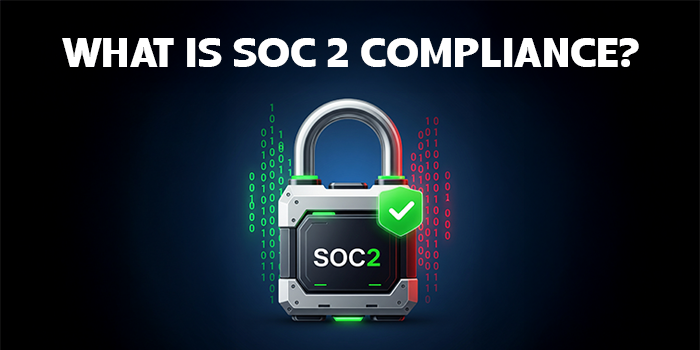What is SOC?
If you’ve ever searched what SOC is or wanted to know what SOC defines, you’re not alone. SOC stands for Service Organization Control, a set of reporting standards developed by the American Institute of Certified Public Accountants (AICPA).
It ensures that service organizations—especially those handling sensitive client data—operate with robust internal controls and security measures.
SOC2 Full Form & Why It Matters
The SOC2 complete form is Service Organization Control 2. This specific framework is designed for technology-driven companies, SaaS providers, financial services, healthcare platforms, and other organizations that store, process, or transmit customer data in the cloud.
SOC 2 is part of a larger family of SOC reports:
- SOC 1: Focuses on financial reporting controls.
- Soc 2: Focuses on data security, privacy, and operational controls.
- SOC 3: A general-use version of SOC 2 for public sharing.
SOC 2 Compliance Explained
SOC 2 compliance means your organization meets the Trust Service Criteria (TSC) set by AICPA. This isn’t just a one-time approval—it’s an ongoing discipline that shapes how you manage security, availability, processing integrity, confidentiality, and privacy.
For companies aiming to win enterprise clients, SOC 2 certification has become a requirement rather than an option.
The Five Trust Service Criteria – Beyond the Basics
Security – The foundation of SOC compliance. Includes access controls, MFA, intrusion detection, and threat monitoring.
Example: Limiting database access to specific role-based accounts.
Availability: Ensuring systems are operational and accessible when promised. Includes uptime monitoring, disaster recovery, and redundancy planning.
Example: A fintech platform with a failover server that activates during outages.
Processing Integrity – Delivering accurate, timely, and authorized data processing.
Example: Automated invoicing software that validates amounts before sending.
Confidentiality – Protecting non-public business information.
Example: Encrypting marketing campaign data before client delivery.
Privacy – Managing personal information according to policies and regulations.
Example: A telemedicine app securely deletes patient records after the retention period.
SOC 2 Certification – Type I vs. Type II
When you pursue SOC 2 certification, you choose between:
Type I: Verifies that you have the proper controls in place at a specific point in time.
Type II: Verifies those controls operate effectively over a period (3–12 months).
Most serious clients—especially in regulated industries—prefer Type II.
The SOC 2 Certification Process
Readiness Assessment: Identify applicable Trust Service Criteria and conduct a gap analysis.
Remediation: Implement missing technical, procedural, and documentation controls.
Pre-Audit Testing: Run simulations, verify logs, test backups.
Audit Execution: Independent CPA firm reviews evidence and evaluates controls.
Certification: Achieve your SOC 2 certification and begin continuous compliance maintenance.
Where Prowise Systems Comes In
The SOC 2 journey can be overwhelming. Prowise Systems specializes in guiding businesses through SOC 2 compliance from start to finish.
Their process includes:
Objective Determination & Scope Setting – Mapping requirements to your industry.
Gap Analysis & Remediation Support – Closing both technical and procedural gaps.
Training & Awareness – Educating staff on SOC certification responsibilities.
Audit Preparation & Coordination – Streamlining communication with auditors.
Ongoing Compliance Support – Mock audits, quarterly checks, and continuous monitoring.
Whether you’re a SaaS startup in Hyderabad or a fintech firm in Canada, Prowise tailors the SOC 2 certification process to your needs.
Industry-Specific SOC 2 Insights
- SaaS: Cloud configuration reviews, API security, uptime SLAs.
- Healthcare: HIPAA integration alongside SOC 2 Privacy controls.
- Fintech: Payment encryption, fraud detection, and transaction monitoring.
Challenges in Achieving SOC 2 Certification
- Documentation Gaps – Having controls but no evidence.
- Vendor Risks – Overlooking the security of third-party tools.
- Tool Overload – Implementing technology without aligning policies.
Prowise addresses these from the first consultation, making SOC 2 certification smoother and faster.
Maintaining SOC Compliance
Achieving SOC 2 is not the finish line—it’s the start of continuous compliance. You must:
- Conduct periodic risk assessments.
- Update security controls for evolving threats.
- Train staff regularly.
Perform annual SOC 2 audits to retain SOC certification.
Why SOC 2 Certification is a Competitive Advantage
When you can present a valid SOC 2 certification:
- You increase client trust instantly.
- You qualify for contracts otherwise out of reach.
- You reduce the risk of costly breaches.
In a market where data trust is currency, SOC 2 certification is a proven business growth driver.
Final Takeaway
Understanding what SOC is, the SOC2 complete form, and the SOC 2 compliance is only the first step. The real challenge is translating those concepts into a functioning, audit-ready environment that earns and maintains your SOC 2 certification.
With evolving security threats, strict client requirements, and the complexity of SOC compliance, trying to navigate the process alone can drain time, money, and resources. That’s why working with an experienced partner like Prowise Systems is invaluable.
They combine deep technical knowledge, proven processes, and tailored guidance to not just help you pass an audit—but to build a lasting culture of security and trust in your organization. In today’s competitive market, that’s not just compliance—it’s a business advantage.




